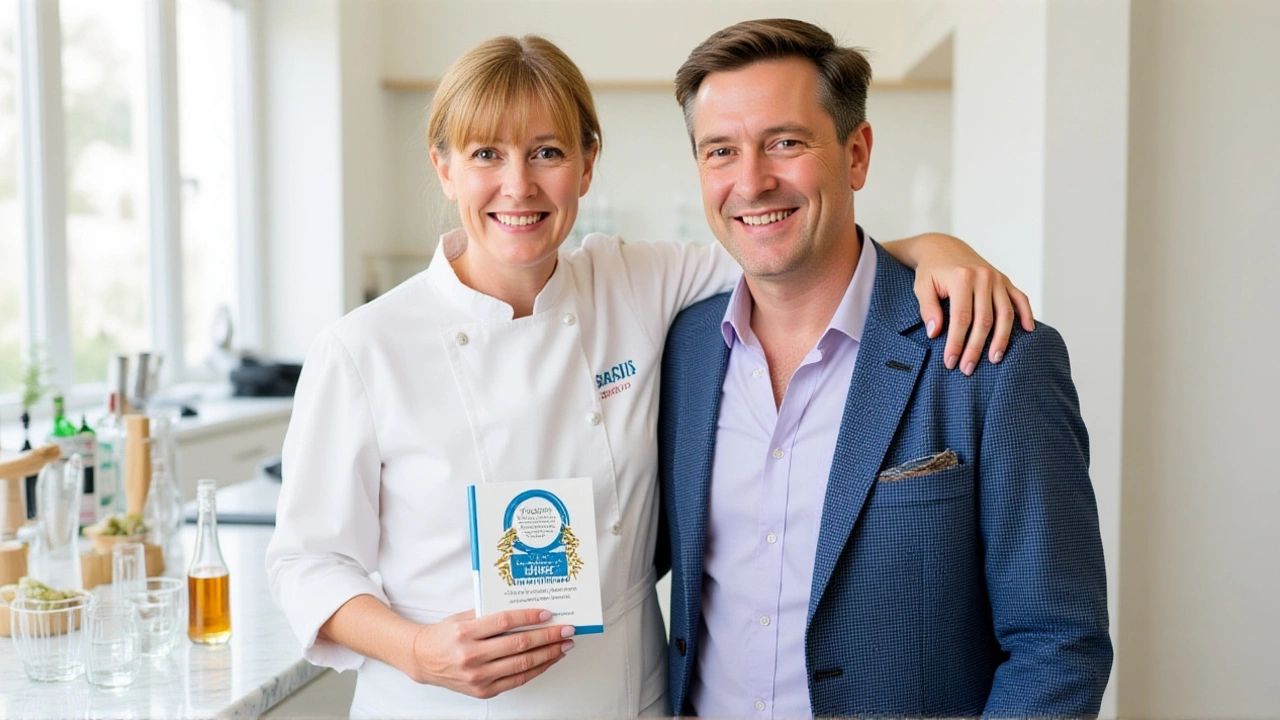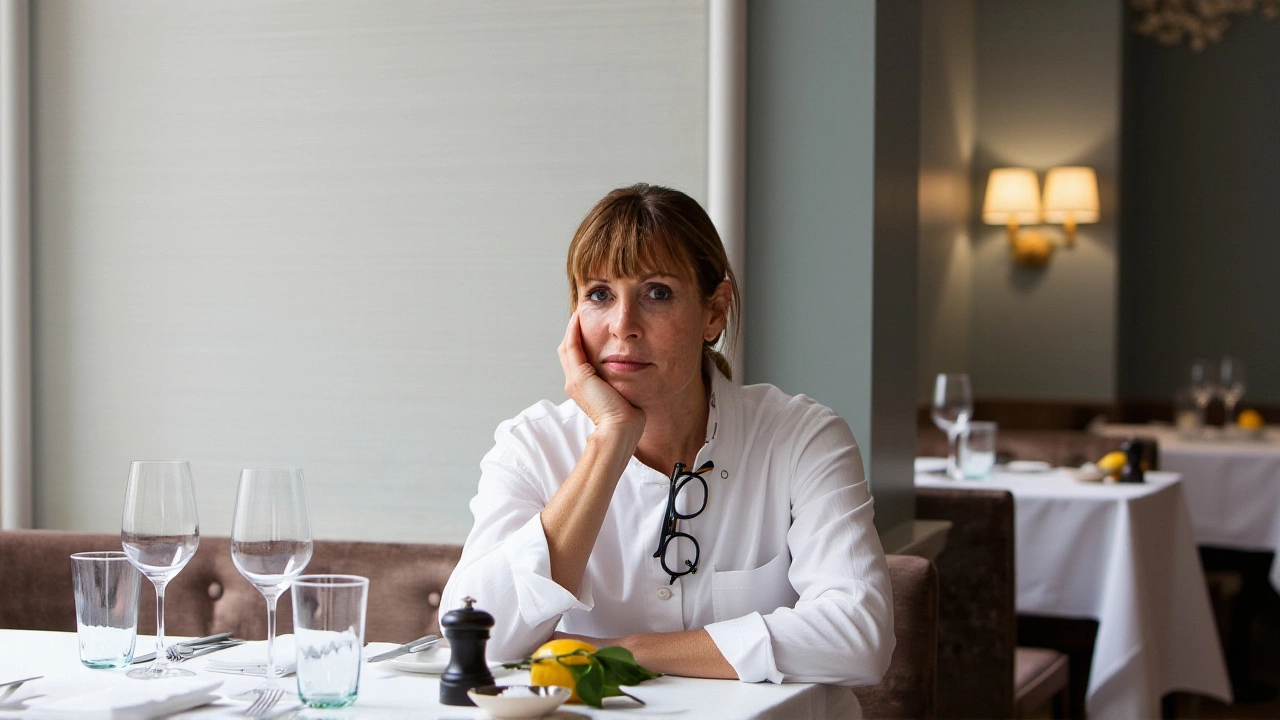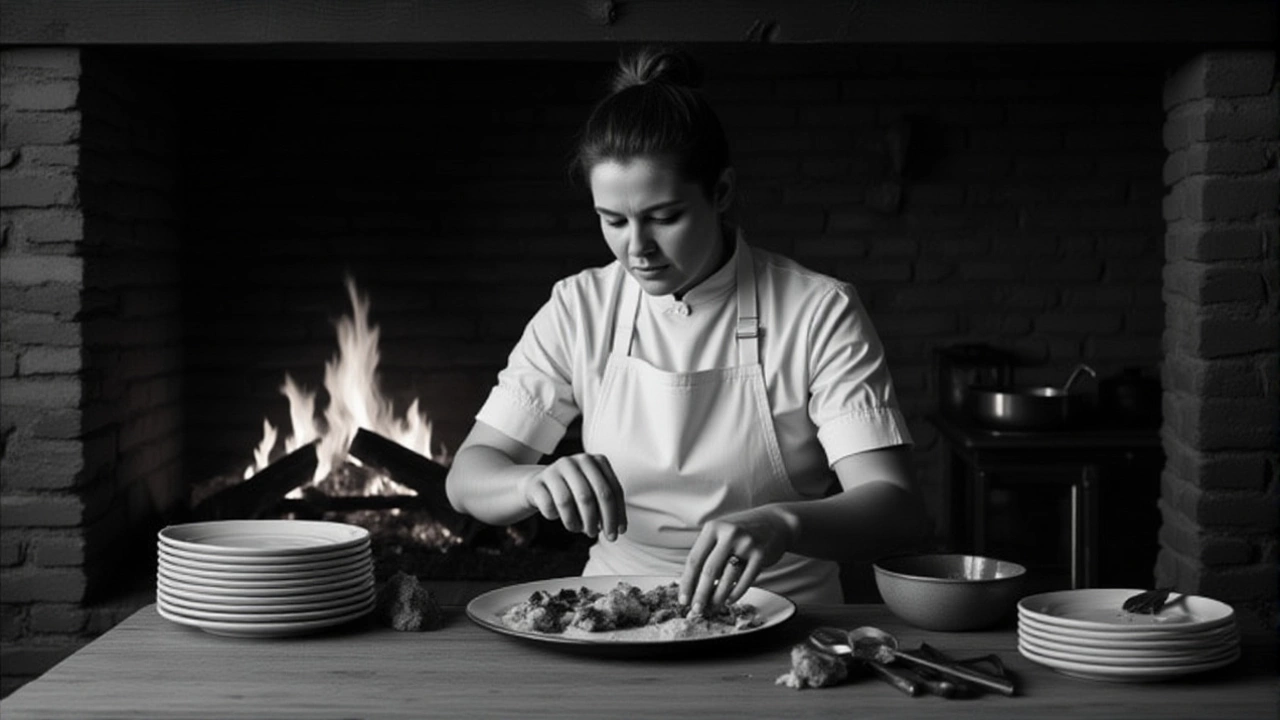When Julia Patterlini fires up the charcoal at Heckfield Place, she’s not just cooking dinner—she’s telling a story. On October 25, 2023, Restaurant Online published an intimate profile of the head chef, revealing how her work with Skye Gyngell shaped her approach to flavor, fire, and even dog food. Located in the rolling hills of Heckfield, Hampshire, the biodynamic estate isn’t just a hotel; it’s a living farm-to-table experiment where pigs roam freely, vegetables are plucked minutes before serving, and the grill is treated like a sacred tool.
From Petersham Nurseries to the Heart of Hampshire
Patterlini’s journey to Heckfield Place didn’t begin in a kitchen. It began in the quiet, herb-scented gardens of Skye Gyngell’s Petersham Nurseries Cafe in Richmond, London. Gyngell, the Australian-born chef who earned a Michelin star for her delicate, seasonal dishes, became an unexpected mentor. "She taught me that restraint isn’t weakness—it’s precision," Patterlini told Restaurant Online. "If you’re going to serve a single strawberry, make sure it tastes like summer. If you’re grilling beef, let the fire do the talking. Don’t drown it in sauce." That philosophy stuck. After leaving Petersham, Patterlini spent years refining her craft across Europe before landing at Heckfield Place in 2020. The transition wasn’t just a job change—it was a return to roots. "Heckfield doesn’t just source ingredients," she said. "It grows them. The chickens know the names of the staff. The pigs have favorite spots in the mud. You can’t fake that.""Flash-Grilling Brazilian BBQ—And Why It Works
The article’s most surprising revelation? Patterlini’s mastery of Brazilian barbecue. Not the slow-smoked style of Texas, but the high-heat, fast-sear technique of churrasco. "Flash-grilling isn’t about speed—it’s about control," she explained. "You want the outside charred, almost smoky, but the inside still pink, juicy. Too long, and you lose the soul of the cut. Too short, and it’s just raw meat with a crust." She recommends cuts like picanha (top sirloin cap) and flank steak, seasoned simply with coarse sea salt and a splash of lime. The secret? A two-stage fire: hot coals for searing, then moving the meat to a cooler zone to finish gently. "It’s like dancing," she added. "You step in, you step out. You don’t stay too long in one place." For drinks? "A crisp, acidic white—think Albariño or Sauvignon Blanc—cuts through the fat. Or a chilled Brazilian caipirinha. The lime and sugar balance the smoke. Red wine? Only if it’s light. Pinot Noir. No heavy oaky monsters."
Cooking for Dogs? Yes, Really.
What makes Patterlini unusual even among top chefs? She cooks for dogs. Specifically, the guests’ pets at Heckfield Place. "We have a lot of fussy canines," she laughed. "One dog only eats chicken with carrots. Another refuses anything that smells like garlic. One won’t touch anything that’s not hand-cut." So Patterlini created a canine menu: slow-braised chicken thighs, pureed sweet potato, and a dash of turmeric for inflammation. No onions. No salt. No spices beyond what’s safe. "It’s not gourmet," she said. "But it’s thoughtful. And if a dog’s happy, the owner’s happy. And that’s hospitality, too."The Bigger Picture: Farm-to-Table as a Lifestyle
Heckfield Place isn’t just a hotel with a restaurant. It’s a 400-acre biodynamic ecosystem. The kitchen doesn’t order from distributors—it harvests from its own fields, orchards, and pastures. Eggs come from hens that forage under apple trees. Honey is from bees on-site. Even the bread is made with flour milled from wheat grown two miles away. "This isn’t a trend," Patterlini insisted. "It’s responsibility. If you’re going to kill an animal for food, you owe it to that animal to have lived well. If you’re going to take a vegetable, you owe the soil its rest." Her approach reflects a quiet revolution in UK fine dining—away from Michelin-starred complexity, toward authenticity. "People don’t want to be wowed anymore," she said. "They want to feel connected. To the land. To the hands that grew it. To the fire that cooked it."
What’s Next for Patterlini?
No announcements of new restaurants or TV appearances. No book deals yet. But Patterlini is quietly expanding Heckfield’s pet-friendly offerings. A new canine bakery is in the works—homemade biscuits with pumpkin and blueberry. "I’ve been testing recipes with a golden retriever named Bertie," she said. "He’s the toughest critic I’ve ever had." She’s also experimenting with smoke infusion techniques for vegetarian dishes—smoked eggplant, smoked tomato broth. "Why should meat have all the fun?" The October 2023 interview remains the most current public insight into her work. But if you visit Heckfield Place this autumn, you might just catch her at the grill, tongs in hand, humming, with a dog at her feet and a glass of Albariño nearby.Frequently Asked Questions
How does Julia Patterlini’s approach to Brazilian barbecue differ from traditional Texas BBQ?
Unlike Texas BBQ, which relies on low-and-slow smoking over wood for hours, Patterlini uses flash-grilling—high heat for just minutes to sear the outside while keeping the inside tender. She focuses on cuts like picanha and uses minimal seasoning, letting the fire and quality of the meat speak for themselves. The goal isn’t tenderness through time, but texture through precision.
Why is Skye Gyngell considered a major influence on Julia Patterlini?
Gyngell’s philosophy of minimalism and seasonality deeply shaped Patterlini’s cooking. At Petersham Nurseries Cafe, Gyngell taught her to prioritize ingredient integrity over complexity—using a single perfect strawberry instead of layered sauces. This restraint, Patterlini says, became the foundation of her own style, especially in her work at Heckfield Place’s farm-driven kitchen.
What makes Heckfield Place unique among UK fine dining destinations?
Heckfield Place operates as a fully integrated biodynamic estate: it grows its own produce, raises its own livestock, and even mills its own flour. Unlike restaurants that source ingredients, Heckfield controls every step from soil to plate. This deep connection to land and animal welfare elevates it beyond a hotel restaurant—it’s a living model of sustainable hospitality.
Can you really cook meals for dogs in a fine dining kitchen?
Yes—and Patterlini does. She prepares simple, safe meals for guests’ pets: slow-cooked chicken, pureed sweet potato, and turmeric-infused broth, all free of onions, garlic, and excess salt. It’s not gourmet, but it’s intentional. The kitchen even has a separate prep area for pet food to avoid cross-contamination. It’s a small detail, but one that reflects Heckfield’s broader ethos: hospitality means caring for everyone who walks through the door—human or canine.
What beverage does Julia Patterlini recommend with Brazilian barbecue?
She favors crisp, acidic whites like Albariño or Sauvignon Blanc to cut through the fat of grilled meats. A chilled caipirinha—lime, sugar, and cachaça—is her top pick for authenticity. She avoids heavy reds, recommending only light-bodied options like Pinot Noir if wine is preferred. The key is balance: acidity and brightness to counter the smoky richness.
Is there any new development in Patterlini’s work since the 2023 interview?
While no public announcements have been made, Patterlini is developing a canine bakery at Heckfield Place, testing homemade biscuits with pumpkin and blueberry for guests’ dogs. She’s also experimenting with smoking vegetables—like eggplant and tomatoes—to expand vegetarian options without sacrificing depth of flavor. Her next project may not be on a menu, but it’s already in the oven.
